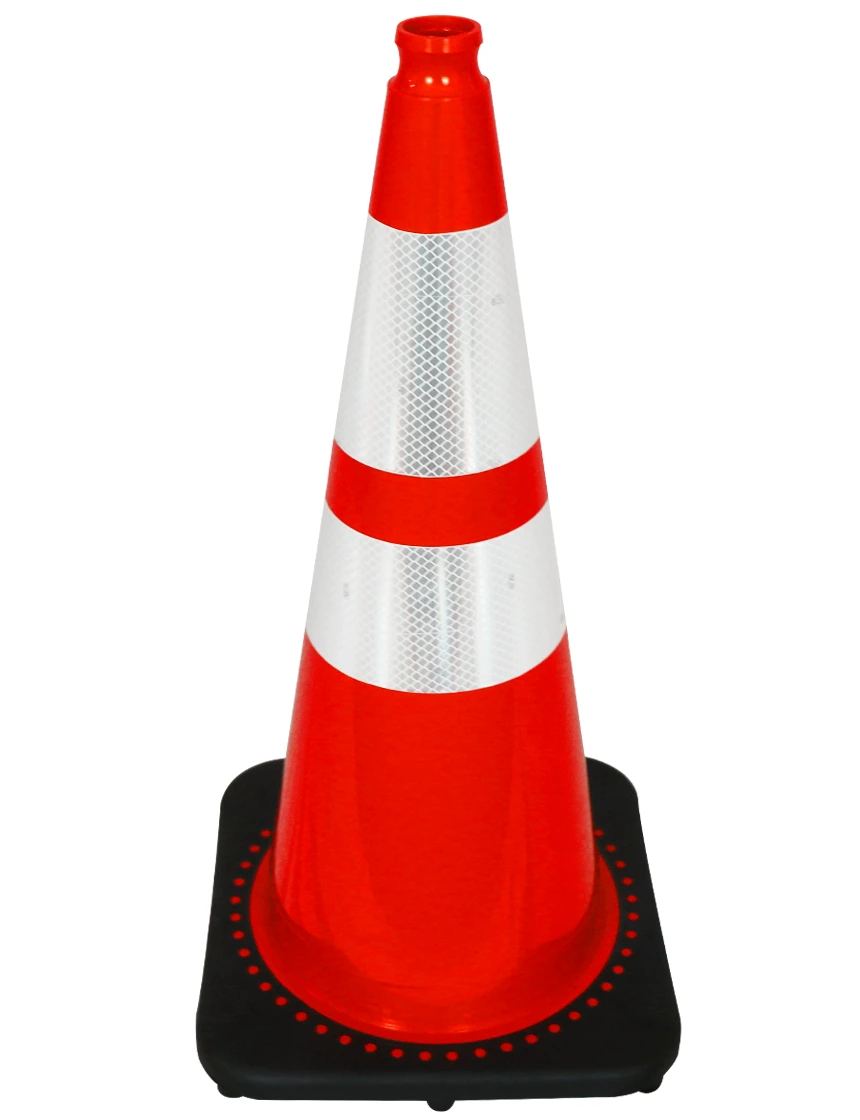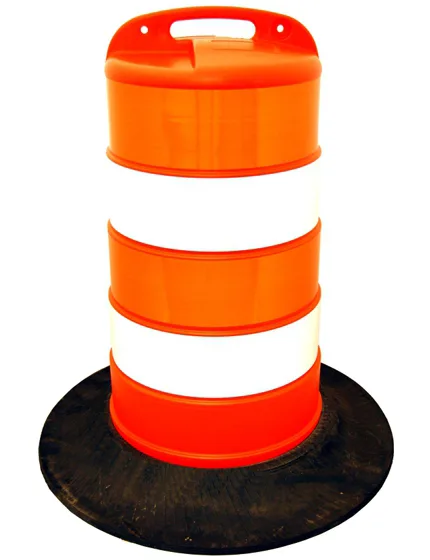Guide to Closing a Lane with Traffic Cones in Compliance with MUTCD
A detailed roadmap to safely and legally managing temporary traffic control using traffic cones, aligned with the Manual on Uniform Traffic Control Devices (MUTCD).
Understanding the Components of a Lane Closure
According to MUTCD Section 6C.04, a lane closure comprises five key zones, each serving a specific safety function:- Advance Warning Area: Alerts drivers well ahead of the closure, giving them time to adjust speed and behavior.
- Transition Area: Guides traffic safely from its usual path to a new one via tapers.
- Buffer Space: Acts as a protective cushion between moving traffic and the work zone.
- Work Space: The area where construction, maintenance, or emergency response takes place.
- Termination Area: Smoothly transitions traffic back to its normal flow, marking the end of the closure.
Traffic Cone Requirements
Traffic cones are the backbone of most temporary lane closures. The MUTCD outlines specific requirements in Section 6F.64. For a variety of orange safety cones and reflective traffic cone options, explore the Traffic Safety Store’s extensive traffic cone selection.- Material & Color: Cones must be primarily orange, made from flexible, durable materials (e.g., PVC) that won’t harm vehicles on impact.
- Retroreflectivity: Must include reflective bands for visibility in low-light conditions.
- Height Requirements:
- Minimum 18 inches for low-speed roads (< 45 mph).
- Minimum 28 inches for highways or high-speed roads (≥ 45 mph).
- 36 inches or taller recommended for urban freeways or high-traffic zones.
- Reflective Band Specifications:
- 28–36 inch cones: 6-inch white band 3–4 inches from the top, plus a 4-inch white band 2 inches below.
- ≥ 36-inch cones: Additional reflective bands may be required based on local standards.
“Cones shall be predominantly orange and shall be made of a material that can be struck without causing damage to the impacting vehicle.” – MUTCD 6F.64.02

Proper Taper Design
The transition area uses tapers to redirect traffic safely. MUTCD Section 6C.08 defines taper types:- Merging Taper: Merges traffic into an adjacent lane when closing one lane.
- Shifting Taper: Shifts traffic sideways without reducing lanes (e.g., around an obstacle).
- Shoulder Taper: Opens a shoulder as a temporary lane, typically one-third the length of a merging taper.
Taper Length Calculation
Taper lengths vary by speed and lane width, per MUTCD Table 6C-4:
For speeds < 45 mph: L = (W × S²) ÷ 60
For speeds ≥ 45 mph: L = W × S
Where:
- L = taper length (feet)
- W = lane width or offset (feet)
- S = posted or operating speed (mph)
Example: For a 12-foot lane on a 50 mph highway:
L = 12 × 50 = 600 feet
A merging taper here would be 600 feet long.
Cone Spacing in Tapers
Cone spacing enhances driver guidance ( MUTCD Section 6F.65):- Taper Section: Spacing should not exceed the speed limit in feet (e.g., 40 feet in a 40 mph zone).
- Tangent Section: Spacing can be up to twice the speed limit (e.g., 80 feet in a 40 mph zone).
- Tighter spacing (e.g., 20–25 feet) is advised in curves, at night, or in adverse weather.
| Speed (mph) | Max Cone Spacing (Taper) in Feet | Max Cone Spacing (Tangent) in Feet |
|---|---|---|
| ≤ 40 | 20 | 40 |
| 45 | 30 | 60 |
| ≥ 50 | 40 | 80 |
Advance Warning Signs
Warning signs are essential for alerting drivers early, per MUTCD Part 6F. Browse MUTCD-approved signs at the Traffic Safety Store.Minimum Required Signs
- “ROAD WORK AHEAD” (W20-1): General warning of work ahead.
- “RIGHT/LEFT LANE CLOSED AHEAD” (W20-5R/L): Specifies which lane is closing.
- “LANE ENDS MERGE LEFT/RIGHT” (W4-2R/L): Directs merging behavior.
Sign Placement Distances
Distances depend on road type and speed ( MUTCD Table 6C-1):| Road Type | Speed (mph) | Distance (feet) |
|---|---|---|
| Urban (Low Speed) | ≤ 40 | 100–500 |
| Urban (High Speed) | 45–55 | 350–1000 |
| Rural | 40–60 | 500–1500 |
| Expressway/Freeway | ≥ 55 | 1000–2600 |
Buffer Space
Buffer spaces provide a critical safety margin ( MUTCD Section 6C.06):- Longitudinal Buffer: Typically equals the stopping sight distance (e.g., 495 feet at 60 mph).
- Lateral Buffer: A minimum of 2 feet clearance from traffic, adjustable based on site conditions.
Tip: Use additional cones or barrels to mark buffer boundaries, enhancing visibility and safety.
Special Considerations
Nighttime Operations
Night work requires heightened visibility measures ( MUTCD Section 6G.03):- Deploy flashing lights, illuminated signs, or portable work zone lighting.
- Reduce cone spacing (e.g., 15–20 feet in tapers).
- Verify all cones and signs meet retroreflectivity standards (Type III or higher recommended).

Duration of Work
Closure duration impacts setup complexity ( MUTCD Section 6G.02):- Short Duration (≤ 1 hour): Simplified setups with cones and minimal signs.
- Mobile Operations: Use vehicle-mounted signs and shadow vehicles with arrow boards.
- Long-Term (> 3 days): Employ durable devices like drums or barriers, plus detailed traffic control plans.
High-Speed, High-Volume Roads
High-traffic highways require robust setups ( MUTCD Section 6G.04):- Use heavier devices (e.g., traffic drums or concrete barriers).
- Extend warning distances (e.g., 1 mile on freeways).
- Add arrow boards and dynamic message signs for real-time updates.
Termination Area
The termination area restores normal traffic flow ( MUTCD Section 6C.07):- Minimum length: 50–100 feet, extendable based on speed.
- Use wider cone spacing (e.g., 40–80 feet) to ease drivers back.
- Install an “END ROAD WORK” (G20-2) sign for clarity.
Inspections and Maintenance
Ongoing vigilance ensures safety ( MUTCD Section 6B.01):- Check for damaged or displaced cones daily, replacing as needed.
- Adjust spacing or add devices during weather changes (e.g., fog, rain).
- Keep a log of setup, inspections, and modifications for accountability.
Quick Checklist for MUTCD-Compliant Lane Closures
- Confirm cone height and reflectivity match roadway speed.
- Calculate and verify taper length using MUTCD formulas.
- Establish buffer space based on stopping sight distance.
- Place warning signs at appropriate distances and heights.
- Enhance nighttime visibility with lights and reflective bands.
- Conduct regular inspections and document adjustments.
Conclusion
Closing a lane with traffic cones is a precise process that demands adherence to MUTCD standards to safeguard everyone involved. From selecting the right cones to calculating tapers and placing signs, each step contributes to a secure work zone. Regularly review the latest MUTCD edition and consult local regulations, as some states have additional requirements. Need reliable equipment? The Traffic Safety Store offers a full range of MUTCD-compliant cones, drums, signs, and more to keep your project safe and compliant. Shop Traffic Safety StoreOrder your Traffic Cones Today! Call us at 800-429-9030.

Orange 28" 7.0 Lb. Traffic Cone with Black Base
- 14" x 14" base
- Approx. 7.0 lbs. each
Quick Facts:
- 28" tall, 14"x14" base
- 7 lbs weight
- JBC Part No. RS70032CT3M64
- Safety Standards - MUTCD; NCHRP-350 crashworthy approval
- Free Shipping on orders of 465 cones or more
- call for details 800-429-9030

Orange 36" 10.0 Lb. Traffic Cone with Black Base
- 14" x 14" base
- Approx. 10.0 lbs. each
- Two 'recesses' molded into cone to protect reflective collars when stacked
Quick Facts:
- 36" tall, 14"x14" base, Bright Orange
- 10 lbs weight
- Safety Standards - MUTCD; NCHRP-350 crashworthy approval
- Free Shipping on orders of 385 cones or more
- call for details 800-429-9030

36" Traffic Cones - Solid Orange 10 lbs
36" Traffic Cones - Solid Orange 10 lbs
Quick Facts:
- 36" tall, 15"x15" base
- 10 lbs weight (optional 12 lbs weight in orange)
- Safety Standards - MUTCD; NCHRP-350 crashworthy approval: MASH Accepted


28" Traffic Cones - Solid Orange 7 lb
28" Traffic Cones - Solid Orange
Quick Facts:
- 28" tall, 15"x15" base
- 7 lbs weight (optional 10 lbs weight in orange)
- Safety Standards - MUTCD; NCHRP-350 crashworthy approval: MASH Accepted


Plastic Channelizer Drum with Tire Base
At 37-inches tall with a 23-inch diameter base, our plastic drum channelizer barrier exceeds standard safety dimensions. Known also as highway barrels, road drums, channelizer drums, highway drums, or traffic drums, these are made from lightweight polyethylene while the hefty base is composed of recycled tires so no additional ballast is needed. Even if it does tip over, it's unique shape inhibits it from rolling into traffic. Ideal for freeways, interstates and other high speed roadways.
Bold, UV-resistant orange with orange and white reflective stripes – 4-inch or 6-inch on engineer grade, high-intensity and diamond grade sheeting. Separate type A or C barricade “flasher” lights can be mounted to the handle for added visibility. Tapered for easy stacking. Ships immediately.
Exceeds Safety Standards: MUTCD; NCHRP crash test rating of 350
Quick Facts:
